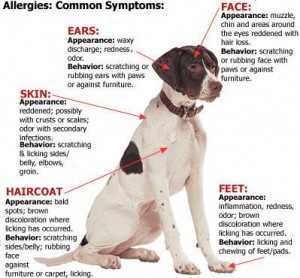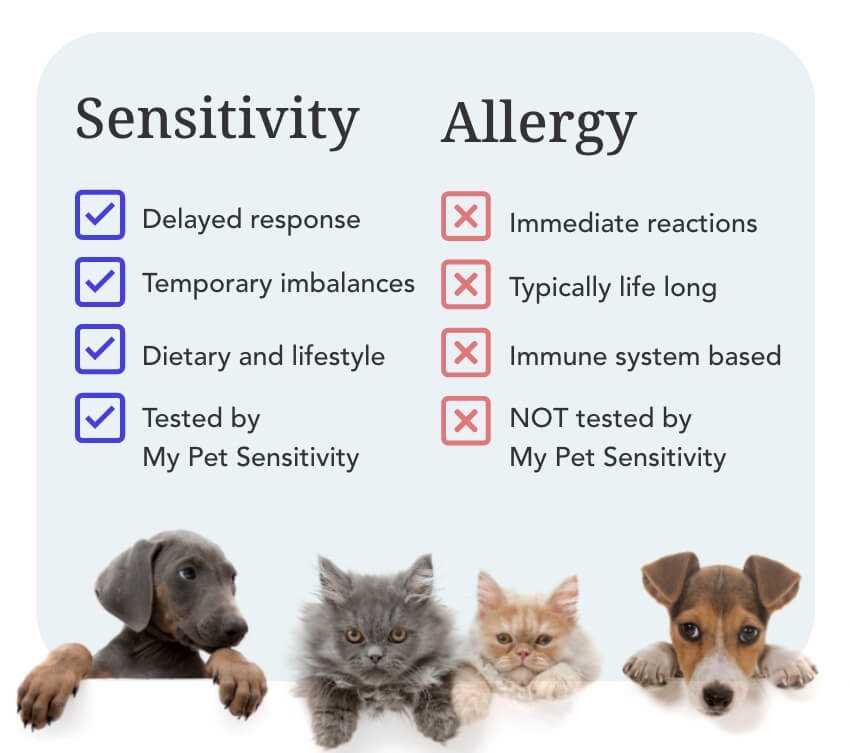It’s a common misconception that only humans and some felines experience sensitivities to certain allergens. In my observant feline world, I’ve noticed that some of my canine friends can indeed react adversely to substances typically associated with cats. These reactions often manifest as skin irritations, respiratory issues, or gastrointestinal disturbances.
For those who suspect their canine companion may be experiencing discomfort due to exposure to feline allergens, consulting with a veterinarian is a crucial step. A professional can conduct tests to determine specific sensitivities and recommend appropriate treatment options. This may include dietary adjustments, allergy medications, or environmental modifications to minimize exposure.
As an eight-year-old Scottish Fold, I can assure you that understanding these reactions not only improves the quality of life for our canine friends but also fosters better relationships between species. Observing changes in behavior or health can provide vital clues, so keep a close eye on your furry companions!
Can Dogs Have Cat Allergies?
Yes, certain canines can experience allergic reactions to feline proteins. These proteins are found in saliva, urine, and skin flakes. Symptoms in affected individuals may include:
- Itchy skin or rashes
- Excessive scratching
- Respiratory issues like sneezing or coughing
- Watery eyes
Identification of such sensitivities often requires veterinary consultation. Allergy testing can provide insights, and management strategies may involve:
- Minimizing exposure to felines.
- Using air purifiers to reduce airborne allergens.
- Regular grooming to decrease dander.
- Medication to alleviate symptoms, as prescribed by a veterinarian.
Monitoring behavior and health closely can help in understanding reactions and adjusting care accordingly.
Identifying Symptoms of Cat Allergies in Dogs

Watch for persistent sneezing or nasal discharge, as these might indicate an adverse reaction to feline dander. If you notice excessive scratching or paw chewing, it could signal discomfort linked to allergens from our furry friends. Keep an eye on the ears; redness or inflammation may suggest an allergic response.
Behavioral Changes
Changes in behavior can also serve as red flags. If a canine companion appears more anxious or withdrawn, it may correlate with exposure to irritants. Additionally, increased licking of the paws or body can indicate skin irritation due to allergens.
Skin Reactions
Look for signs like hives, rashes, or bald patches on the skin. These symptoms could arise from allergens in the environment. If you witness these reactions, consulting a veterinarian for appropriate testing and treatment is advisable.
Regularly monitoring for these symptoms will help ensure your friend stays comfortable and healthy around any feline inhabitants.
Common Triggers and Causes of Feline Allergic Reactions in Canines

Environmental factors are primary contributors to hypersensitivity reactions in canines towards felines. Pollen, dust mites, mold, and dander can cause significant discomfort. These irritants often coexist in homes where both species reside, increasing exposure levels.
Specific Allergens
Proteins found in feline saliva, urine, and skin are common culprits. When a cat grooms itself, the proteins become airborne, potentially leading to reactions in sensitive canines. Other triggers include fur shedding and litter box materials, which can release allergens into the environment.
Genetic Predisposition
Some canines possess a genetic tendency towards hypersensitivity, making them more vulnerable to environmental triggers. Breeds with a history of skin conditions may experience heightened reactions. Regular veterinary check-ups can identify these predispositions early, allowing for tailored management plans.
Managing and Treating Cat Allergies in Dogs
For those furry friends experiencing reactions to feline dander, immediate action is necessary. First, consult a veterinarian for a proper diagnosis and treatment plan tailored to specific needs. Antihistamines may be prescribed to alleviate symptoms such as itching and sneezing.
Environmental Control

Minimize exposure to allergens by creating a cat-free zone within the home. Regular cleaning, including vacuuming with HEPA filters and washing bedding, reduces dander accumulation. Consider using air purifiers to improve indoor air quality.
Diet and Supplements
A balanced diet rich in omega-3 fatty acids can support skin health and reduce inflammation. Supplements like fish oil may also help in managing symptoms. Always consult the vet before introducing new supplements.
Understanding how to deal with these sensitivities is vital for both comfort and health. If you’re curious about other pet behaviors, check out how canines can spray like felines. For those wondering about plant safety, explore whether staghorn ferns are toxic to cats.
Video:
It’s a common misconception that only humans and some felines experience sensitivities to certain allergens. In my observant feline world, I’ve noticed that some of my canine friends can indeed react adversely to substances typically associated with cats. These reactions often manifest as skin irritations, respiratory issues, or gastrointestinal disturbances.
For those who suspect their canine companion may be experiencing discomfort due to exposure to feline allergens, consulting with a veterinarian is a crucial step. A professional can conduct tests to determine specific sensitivities and recommend appropriate treatment options. This may include dietary adjustments, allergy medications, or environmental modifications to minimize exposure.
As an eight-year-old Scottish Fold, I can assure you that understanding these reactions not only improves the quality of life for our canine friends but also fosters better relationships between species. Observing changes in behavior or health can provide vital clues, so keep a close eye on your furry companions!
Can Dogs Have Cat Allergies?
Yes, certain canines can experience allergic reactions to feline proteins. These proteins are found in saliva, urine, and skin flakes. Symptoms in affected individuals may include:
- Itchy skin or rashes
- Excessive scratching
- Respiratory issues like sneezing or coughing
- Watery eyes
Identification of such sensitivities often requires veterinary consultation. Allergy testing can provide insights, and management strategies may involve:
- Minimizing exposure to felines.
- Using air purifiers to reduce airborne allergens.
- Regular grooming to decrease dander.
- Medication to alleviate symptoms, as prescribed by a veterinarian.
Monitoring behavior and health closely can help in understanding reactions and adjusting care accordingly.
Identifying Symptoms of Cat Allergies in Dogs

Watch for persistent sneezing or nasal discharge, as these might indicate an adverse reaction to feline dander. If you notice excessive scratching or paw chewing, it could signal discomfort linked to allergens from our furry friends. Keep an eye on the ears; redness or inflammation may suggest an allergic response.
Behavioral Changes
Changes in behavior can also serve as red flags. If a canine companion appears more anxious or withdrawn, it may correlate with exposure to irritants. Additionally, increased licking of the paws or body can indicate skin irritation due to allergens.
Skin Reactions
Look for signs like hives, rashes, or bald patches on the skin. These symptoms could arise from allergens in the environment. If you witness these reactions, consulting a veterinarian for appropriate testing and treatment is advisable.
Regularly monitoring for these symptoms will help ensure your friend stays comfortable and healthy around any feline inhabitants.
Common Triggers and Causes of Feline Allergic Reactions in Canines

Environmental factors are primary contributors to hypersensitivity reactions in canines towards felines. Pollen, dust mites, mold, and dander can cause significant discomfort. These irritants often coexist in homes where both species reside, increasing exposure levels.
Specific Allergens
Proteins found in feline saliva, urine, and skin are common culprits. When a cat grooms itself, the proteins become airborne, potentially leading to reactions in sensitive canines. Other triggers include fur shedding and litter box materials, which can release allergens into the environment.
Genetic Predisposition
Some canines possess a genetic tendency towards hypersensitivity, making them more vulnerable to environmental triggers. Breeds with a history of skin conditions may experience heightened reactions. Regular veterinary check-ups can identify these predispositions early, allowing for tailored management plans.
Managing and Treating Cat Allergies in Dogs
For those furry friends experiencing reactions to feline dander, immediate action is necessary. First, consult a veterinarian for a proper diagnosis and treatment plan tailored to specific needs. Antihistamines may be prescribed to alleviate symptoms such as itching and sneezing.
Environmental Control

Minimize exposure to allergens by creating a cat-free zone within the home. Regular cleaning, including vacuuming with HEPA filters and washing bedding, reduces dander accumulation. Consider using air purifiers to improve indoor air quality.
Diet and Supplements
A balanced diet rich in omega-3 fatty acids can support skin health and reduce inflammation. Supplements like fish oil may also help in managing symptoms. Always consult the vet before introducing new supplements.
Understanding how to deal with these sensitivities is vital for both comfort and health. If you’re curious about other pet behaviors, check out how canines can spray like felines. For those wondering about plant safety, explore whether staghorn ferns are toxic to cats.
Video:
It’s a common misconception that only humans and some felines experience sensitivities to certain allergens. In my observant feline world, I’ve noticed that some of my canine friends can indeed react adversely to substances typically associated with cats. These reactions often manifest as skin irritations, respiratory issues, or gastrointestinal disturbances.
For those who suspect their canine companion may be experiencing discomfort due to exposure to feline allergens, consulting with a veterinarian is a crucial step. A professional can conduct tests to determine specific sensitivities and recommend appropriate treatment options. This may include dietary adjustments, allergy medications, or environmental modifications to minimize exposure.
As an eight-year-old Scottish Fold, I can assure you that understanding these reactions not only improves the quality of life for our canine friends but also fosters better relationships between species. Observing changes in behavior or health can provide vital clues, so keep a close eye on your furry companions!
Can Dogs Have Cat Allergies?
Yes, certain canines can experience allergic reactions to feline proteins. These proteins are found in saliva, urine, and skin flakes. Symptoms in affected individuals may include:
- Itchy skin or rashes
- Excessive scratching
- Respiratory issues like sneezing or coughing
- Watery eyes
Identification of such sensitivities often requires veterinary consultation. Allergy testing can provide insights, and management strategies may involve:
- Minimizing exposure to felines.
- Using air purifiers to reduce airborne allergens.
- Regular grooming to decrease dander.
- Medication to alleviate symptoms, as prescribed by a veterinarian.
Monitoring behavior and health closely can help in understanding reactions and adjusting care accordingly.
Identifying Symptoms of Cat Allergies in Dogs

Watch for persistent sneezing or nasal discharge, as these might indicate an adverse reaction to feline dander. If you notice excessive scratching or paw chewing, it could signal discomfort linked to allergens from our furry friends. Keep an eye on the ears; redness or inflammation may suggest an allergic response.
Behavioral Changes
Changes in behavior can also serve as red flags. If a canine companion appears more anxious or withdrawn, it may correlate with exposure to irritants. Additionally, increased licking of the paws or body can indicate skin irritation due to allergens.
Skin Reactions
Look for signs like hives, rashes, or bald patches on the skin. These symptoms could arise from allergens in the environment. If you witness these reactions, consulting a veterinarian for appropriate testing and treatment is advisable.
Regularly monitoring for these symptoms will help ensure your friend stays comfortable and healthy around any feline inhabitants.
Common Triggers and Causes of Feline Allergic Reactions in Canines

Environmental factors are primary contributors to hypersensitivity reactions in canines towards felines. Pollen, dust mites, mold, and dander can cause significant discomfort. These irritants often coexist in homes where both species reside, increasing exposure levels.
Specific Allergens
Proteins found in feline saliva, urine, and skin are common culprits. When a cat grooms itself, the proteins become airborne, potentially leading to reactions in sensitive canines. Other triggers include fur shedding and litter box materials, which can release allergens into the environment.
Genetic Predisposition
Some canines possess a genetic tendency towards hypersensitivity, making them more vulnerable to environmental triggers. Breeds with a history of skin conditions may experience heightened reactions. Regular veterinary check-ups can identify these predispositions early, allowing for tailored management plans.
Managing and Treating Cat Allergies in Dogs
For those furry friends experiencing reactions to feline dander, immediate action is necessary. First, consult a veterinarian for a proper diagnosis and treatment plan tailored to specific needs. Antihistamines may be prescribed to alleviate symptoms such as itching and sneezing.
Environmental Control

Minimize exposure to allergens by creating a cat-free zone within the home. Regular cleaning, including vacuuming with HEPA filters and washing bedding, reduces dander accumulation. Consider using air purifiers to improve indoor air quality.
Diet and Supplements
A balanced diet rich in omega-3 fatty acids can support skin health and reduce inflammation. Supplements like fish oil may also help in managing symptoms. Always consult the vet before introducing new supplements.
Understanding how to deal with these sensitivities is vital for both comfort and health. If you’re curious about other pet behaviors, check out how canines can spray like felines. For those wondering about plant safety, explore whether staghorn ferns are toxic to cats.






